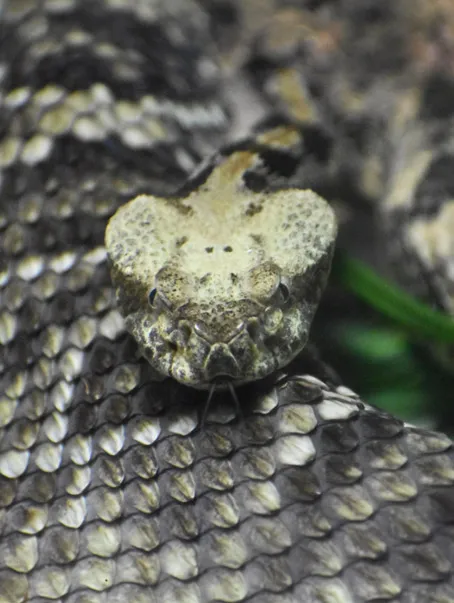Did you know timber rattlesnakes can strike as much as 1/3 to 1/2 of their body length? Learn more about timber rattlesnakes.
The timber rattlesnake’s habitat looks like an area within the Uwharrie Mountains where you might find them. It includes rocks to climb and crevices to hide in. A few heated rocks help them regulate their body temperature.
By marking snakes encountered on the North Carolina Zoo’s grounds, Zoo staff are learning valuable information about the status of our local snake population. In addition, snake research on site creates unique opportunities to teach visitors about the importance of these misunderstood but critical predators. Snakes are also tested for a fungal disease that is affecting an increasing number of wild snakes in North Carolina. You can read more about the Zoo’s work on wild snakes below, under related resources.
- Solitary from April-October, they may den up with other snakes and hibernate through winter.
- To avoid detection, they remain coiled and motionless.
- They rattle as a warning in response to a threat.
- Extinct in Wild (EW)
- Critically Endangered (CR)
- Endangered (EN)
- Vulnerable (VU)
- Near Threatened (NT)
- Least Concern (LC)
- Not Evaluated (NE)


